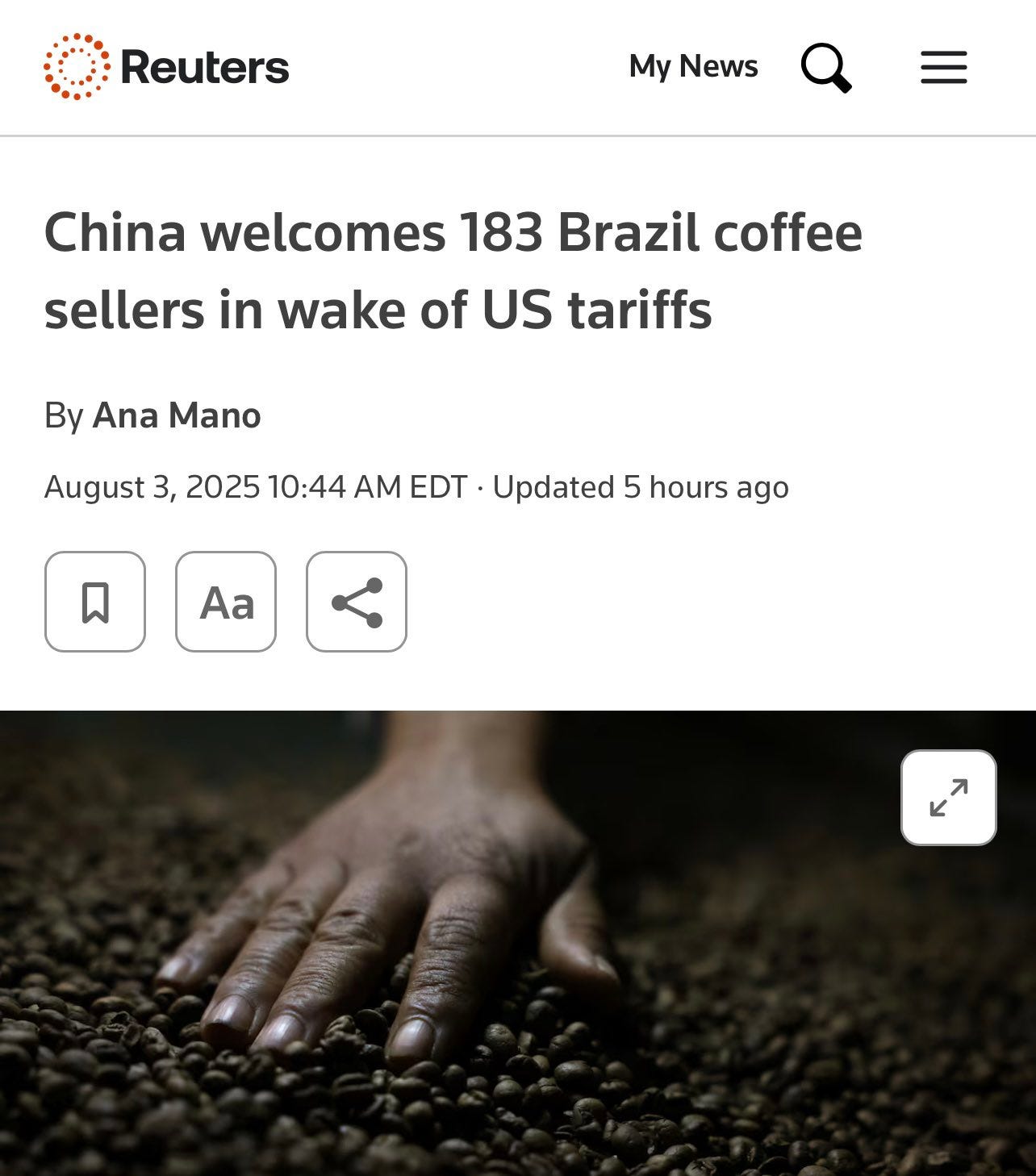The Limits of Macro Balances
What Brazilian coffee teaches us about system dynamics
A particular framing of global economic adjustment - what we might call the macro balances view - has become a dominant lens through which many analysts interpret international trade relationships and capital flows. This view holds that economic actors are constrained by aggregate accounting identities: that every surplus must have a corresponding deficit, and every increase in one component of demand must be offset by a decline elsewhere.
This approach can be intuitively appealing. At any moment in time, the circular flow of income must balance. Investment equals savings. Imports minus exports equals the current account balance. From this perspective, if a country like China is a structural net exporter, then any increase in its imports - say, of Brazilian coffee - must be matched either by a decrease in other imports or an increase in exports. There appears to be only 100% to go around, and if one sector gains, another must lose.
But while this framework may offer a neat way to describe the world at a point in time, it is of limited use - if not outright misleading; after all, accounting identities hold by definition - when used to make inferences about dynamic economic change. Its two core presuppositions deserve closer scrutiny.
Atemporality and the Illusion of Static Constraints
The macro balances approach treats the economy as if it is static and atemporal. There is little room in this framework for structural change, income growth, or evolving consumption preferences. Trade relationships are imagined as fixed quantities, constrained by proportional limits.
This leads to statements such as: “China cannot increase imports of Brazilian coffee unless it imports less of something else or exports more.” But this assumes that the level of aggregate demand is fixed and that the composition of imports is structurally locked.
In reality, economic systems are dynamic. Incomes grow, consumption patterns evolve, and economies diversify. As Chinese households become wealthier, their consumption changes. They may demand more services, more protein, or, indeed, more imported coffee. This rising demand does not necessarily require an offsetting reduction elsewhere. Even if the current account balance remains unchanged as a share of GDP, the composition of imports can shift considerably.
Dynamic economies adjust not just in levels, but in structure. A framework that does not account for this is ill-suited to understanding how trade relationships develop over time.
Misplaced Causality: The Savings Constraint Fallacy
A second problem with the macro balances perspective is its treatment of savings as a causal constraint on spending. This framing assumes that a high savings rate constrains domestic consumption and, by extension, import demand. It follows that until a country “fixes” its savings-investment imbalance, it cannot meaningfully shift its trade patterns.
But this reverses the actual macroeconomic causality. In most demand-led frameworks, savings is not an ex ante constraint but an ex post outcome. Households and firms make spending decisions based on income, expectations and institutional conditions. The level of savings adjusts as a residual. If household consumption rises, savings will fall. If investment accelerates, national income will grow, and the savings rate may increase even as consumption grows in absolute terms.
In this light, a rise in Chinese imports of Brazilian coffee does not require a prior adjustment to the national savings rate. Rather, it may reflect an outcome of broader shifts in income distribution, rising real incomes, consumption norms, or credit availability. The macro balances identity will still hold, but the path taken to reach that new balance state (which is nonetheless nothing more than a snapshot in time) is far more contingent and driven by dynamic variables.
Beyond Balance-Sheet Economics
The appeal of the macro balances view lies in its simplicity. It offers a clean, almost mechanical way of thinking about global balances and trade flows. But simplicity is not the same as explanatory power. When used prescriptively, especially in arguments about the limits of trade diversification, it risks reifying temporary accounting identities into structural constraints.
To understand a world in motion, we need frameworks that begin with process, transformation and time; not with balance sheets. Structural trade patterns are not static; they are the outcomes of growth, institutional development and shifting demand (industry and household). If Brazilian coffee exports to China are to grow, the real questions lie in income growth, consumer preferences, and supply chain logistics, not in the presumed rigidity of national accounts.



